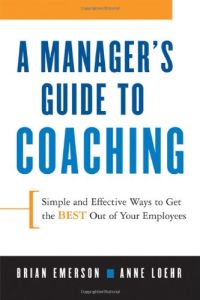Join getAbstract to access the summary!

Join getAbstract to access the summary!
Anne Loehr and Brian Emerson
A Manager's Guide to Coaching
Simple and Effective Ways to Get the Best From Your Employees
AMACOM, 2008
What's inside?
Are your staffers motivated? Cooperative? Here’s how to coach them so they keep their jobs, perform and even advance.
Recommendation
In this tremendously useful book, two seasoned executive coaches, Anne Loehr and Brian Emerson, expertly explain what coaching is, how it functions and how managers can learn to put it to work to improve employees’ productivity and morale. Often people are unaware of attitudes or behaviors that are holding them back or jeopardizing their careers. That’s where a good coach plays a crucial role. The authors delve into coaching’s methods, explain its benefits, and offer thoughtful instructions and examples. They devote the last third of the book to specific questions to ask while coaching. How you’ll react to the writing style, which is generally clear and serviceable, depends on if you think that “coachee” is a real word and that “everyone does their work” is good enough on the grammar front. Either way, this is a straightforward, practical book for managers who want to be productive coaches.
Summary
About the Authors
Anne Loehr and Brian Emerson are certified executive coaches. They co-founded the Safaris for the Soul leadership retreats. Emerson also heads Riverstone Endeavors, an organizational development firm.

















Comment on this summary